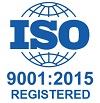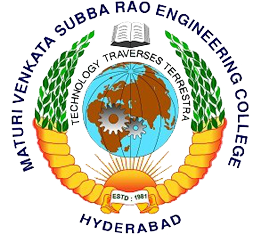EFFECT FROM THE ACADEMIC YEAR 2014 - 2015
CH 101
ENGINEERING CHEMISTRY
Instruction 3 Periods per week
Duration of University Examination 3 Hours
University Examination 75Marks
Sessional 25Marks
UNIT - I : ELECTROCHEMISTRY
1.1 Electrodics :
Electrochemical Cells — Electrolytic and Galvanic Cells. Cell notation. Concept of electrode potential and EMF. Determination of single electrode potential. Electrochemical Series-significance. Nernst equation derivation and applications - Numerical Problems. Types of Electrodes (a) Gas Electrode (Standard Hydrogen Electrode) (b) Metal- insoluble salt Electrode (Calomel Electrode) (c) Redox Electrode (Quinhydrone Electrode) (d) Ion selective electrode (Glass electrode)
1.2. Electroanalytical Techniques:
Principle, method and applications of the following techniques. Conductometry: Acid — Base titrations. Potentiometry: Acid — Base and Redox titrations. pH metry: Acid — Base titrations.
1.3. Battery Chemistry:
Concept of Reversible and Irreversible cells. Primary, secondary and flow batteries: Zinc—AgO, Nickel-Cadmium and Lithium- Ion batteries — Construction, working and applications. Flow batteries (Fuel Cells): Hydrogen — Oxygen and Methanol — Oxygen fuel cells.
UNIT II : CORROSION AND WATER CHEMISTRY
2.1 Corrosion and its control:
Causes and effects- Types of corrosion-Chemical (dry) and electrochemical (wet) corrosion —Mechanism of electrochemical corrosion —Formation of anodic and cathodic areas —Galvanic corrosion, differential aeration corrosion (waterline and pitting corrosion) Factors affecting the rate of Corrosion (a) Position of metals in Galvanic Series. (b) Relative areas of anode and cathode. (c) Nature of corrosion product, (d) Temperature (e) Humidity and (f) pH - Pourbaix diagram Corrosion Control Methods: Cathodic Protection — Sacrificial Anode and Impressed Current Methods.
2.2 Surface Coating:
Types of Metallic Coatings, Anodic and Cathodic Coatings-Methods of application of metallic coatings-Electroplating (Nickel Plating) and Electroless plating (Copper Plating). Paints-constituents and their functions.
2.3. Water Chemistry:
Hardness of water-Types — Units of hardness - Determination of temporary and Permanent Hardness of water by EDTA Method (numerical problems) - Alkalinity of water & its determination. Water softening by Ion- Exchange and Reverse Osmosis methods. Specifications of potable water (BIS/ WHO standards). Disinfection of drinking water by chlorination-Break point chlorination and Ozonization.
UNIT-III: ENGINEERING MATERIALS
3.1 Polymers:
Definition of Monomer, Polymer and degree of polymerization. Functionality of monomer. Classification of polymers-Homo, Hetero and Copolymers, Thermoplastics & Thermosetting resins. Types of Polymerization: Addition, Condensation and Co-Polymersation -Examples. Preparation, Properties & Applications of the following polymers: (i) Plastics: Teflon, PMMA and Bakelite. (ii)Fibers: Kevlar and Polyurethane (Perlon-U). (iii)Rubbers/Elastomers: Natural rubber and its chemical structure. Artificial rubbers: Buna-S, and Silicone Rubbers. Compounding of rubber
3.2. Conducting polymers:
Definition. Classification: Extrinsic and Intrinsic polymers. Mechanism of conduction in polyacetylene. Structure of polypyrrole and its doping. Applications of conducting polymers. '
33 Composites:
Basics of composites, composition and properties of composites. Types of composites — Fiber Reinforced composites: Glass Fiber and Carbon fiber. Advantages and applications.
5.4. Green Chemistry
Concept and principles of green chemistry and examples of clean technology.
Suggested Reading :
1. Principles of Physical Chemistry by Puri, Sharma and Pathania S. N., S. Chand & Co. New Delhi (Latest edition).
2. Engineering Chemistry by P C Jain and M Jain. Dhanpat Rai & Sons (15th Edn), New Delhi.
3. Engineering Chemistry by Sashi Chawla. Dhanpat Rai & Sons, New Delhi
4. Chemistry in Engineering and Technology by J C Kuriacose and J Rajaram, TMH, New Delhi.
5. Engineering Chemistry by 0 G Palanna, TMH, New Delhi.
6. Engineering Chemistry by S S Dara, S Chand & Sons, New Delhi.



